Namdo Hanu (남도한우)
2.0 Km 113 2021-03-20
1169, Jukhyang-daero, Damyang-gun, Jeollanam-do
+82-61-383-2211
It sells only Korean beef as a selected model restaurant. This restaurant's signature menu is grilled beef. This Korean dishes is located in Damyang-gun, Jeollanam-do.
Korea Bamboo Museum (한국대나무박물관)
2.2 Km 25180 2021-07-19
35, Jukhyangmunhwa-ro, Damyang-gun, Jeollanam-do
+82-61-380-2901
The Korean Bamboo Museum is a comprehensive complex that preserves, exhibits, produces, and allows people to experience bamboo products. First opened in 1981 at Damju-ri, the museum was expanded and relocated to the current location in March 1998. Not only does the museum provide bamboo-related exhibitions, it also provides techniques on making bamboo products as well as holds the Bamboo Festival every May.
Jungnimwon Garden (죽림원가든)
3.5 Km 97344 2024-02-19
358 Gasan-gil, Wolsan-myeon, Damyang-gun, Jeollanam-do
061-383-1292
Jungnimwon Garden offers traditional Korean flavors in a unique setting. Their signature dish is the Daetongyongjjim (Bamboo-steamed set menu), where various ingredients are steamed together in a long bamboo tube. This dish includes a variety of items such as Korean beef bulgogi, spicy braised chicken, prawn, grilled pork galbi, octopus, abalone, ray, yellow croaker, eggs, and rice served in the bamboo tube. Additionally, their daetongbap jeongsik (steamed rice in bamboo set menu) and hanu tteokgalbi (grilled Korean beef galbi patties) are also highly recommended.
Myeonangjeong Pavilion (면앙정)
5.2 Km 5959 2020-04-27
382-11 Myeonangjeong-ro, Damyang-gun, Jeollanam-do
+82-61-380-2811
Myeonangjeong Pavilion is located on the slopes of Jebongsan Mountain in Damyang-gun. The pavilion was constructed in 1533 by Song Sun (1493-1583), who built it as a place for writing poems. After its construction, the pavilion served as a meeting place for scholars and intellectuals and was even frequented by Lee Hwang (1501-1570), a representative Confucian scholar who is pictured on the 1,000 won bill.
The roof of Myeonangjeong Pavilion was originally made of reeds, straw, grass and other materials which could not withstand the elements. After several repairs, the building was developed into the wooden structure that it is today.
From the back of the pavilion, you can see the mountain range and open wide fields; renowned scholars’ poems are engraved on the wooden panels that decorate the pavilion walls.
Damyang Resort Spa (담양리조트 온천)
5.5 Km 25900 2022-12-28
202, Geumseongsanseong-gil, Damyang-gun, Jeollanam-do
+82-61-380-5111
Damyang Resort is a large resort complex comprised of a hotel, spa, arboretum, and event plaza. The spa is spread over a ground floor and basement floor, with both men's and women's pools, as well as many event pools and an open-air hot spring. Additional facilities include a jjimjilbang (Korean-style sauna), skincare center, and massage center. The hot springs use water with a mix of 20 minerals, including germanium, strontium, sulfuric ions, calcium, and lithium. The mineral mix helps soothe skin, relieve stress, and improve blood circulation to prevent many diseases and ailments.
Daenamugol Bamboo Park (대나무골 테마공원)
5.7 Km 29847 2020-02-10
148, Binaedong-gil, Geumseong-myeon, Damyang-gun, Jeollanam-do
+82-61-383-9291
Situated at the basin of the ravine in Gojisan Mountain along the Geumseongsan mountain fortress and the Chuweolsan mountain range, Daenamugol is surrounded by tall bamboo trees. In spring, the soft green bamboo shoots blanket the whole field; it also serves as a habitat for sedentary birds to take care of their eggs.
The landscaping of the Daenamugol Bamboo Park encapsulates the value of bamboo trees. You can enjoy the fresh crisp air walking in the bamboo grove and the thick pine tree forest. You can try the tea from wild bamboo tea trees grown in the bamboo forest. The park also has Green Town; it includes a playground made out of grass, a hall, an outdoor cooking facility, shower booths, sports fields (volley ball, Jokgu, table tennis, badminton). The theme park has appeared as a backdrop for movies like ‘The Last Witness,’ ‘Sword in the Moon’ as well as in the popular TV drama series ‘Hometown Legends,’ ‘Damo’ and in a number of commercials.
Damyangho Lake (담양호)
6.0 Km 18321 2022-09-15
Geumseongsanseong-gil, Damyang-gun, Jeollanam-do
+82-61-380-3150
Damyangho Lake is a man-made lake, created in 1976 with the construction of a dam on Yeongsangang River. The lake is set at the base of the picturesque Chuwolsan and Geumseongsan Mountains, and its crystal clear water is the habitat of many different freshwater fish species including pond smelt, catfish, snakehead, carp and leather carp. With Damyangho Lake at the center, the area is surrounded by Chuwolsan Tourism Area, Gamagol Youth Camping Grounds and Geumseong Mountain Fortress. The mountain’s lakeside road, which passes through a tunnel at the mid-section of the mountain, is a popular scenic driving road.
Yeongsangang River (영산강)
6.6 Km 8737 2020-05-19
Gaedongsingi-gil, Damyang-gun, Jeollanam-do
+82-61-380-2820
Yeongsangang River (136 kilometers) is the shortest of the four major rivers in Korea. The river starts from Yongchubong Peak (560m) located in Yong-myeon in Damyang, Jeollanam-do. It runs through Damyang, Gwangju, Naju, and Yeongam and eventually flows into the Yellow Sea in Mokpo through the estuary bank.
The river also faces some environmental challenges, including extreme weather events that cause flooding, leading to ecosystem loss and habitat degradation. In December 1981, a dam was built and the damage was significantly reduced. The government has also introduced the Four Major Rivers Restoration Project in 2009 with the objective of restoring the rivers while achieving regional development. Under this project, a significant amount of budget was allocated for resolving problems plaguing the Yeongsangang River.
Geumseongsanseong Fortress (담양 금성산성)
7.1 Km 30327 2020-03-13
Dorim-ri, Damyang-gun, Jeollanam-do
+82-61-380-2812
Geumseongsanseong Fortress in Geumseongsan Mountain (603m) forms a boundary
between two small villages located on the border of two provinces (Geumseong-myeon,
Damyang-gun, Jeollanam-do and Sunchang-gun, Jeollabuk-do) and is one of the
three popular mountains of the Honam region (the Southwestern region of Korea
that includes Jeollanam-do and Jeollabuk-do). The fortress is surrounded by
two walls connecting Cheolmabong Peak, Undaebong Peak, and Jangdaebong Peak.
The total length of the outer wall is 6.486 meters and inner wall is 859 meters.
Historians are uncertain about the year the fortress was built, and
have concluded that it dates back to the Three Kingdoms Period (57 BC – 676 AD) based on an examination of the ruins and remains discovered in the surrounding
area. The fortress was reconstructed in 1409 and repaired in 1610 after the
Imjin War (1592-1598). Following that, it continued to develop into a strong
military base.
- Classification: Historic Site No. 353
- Date of Designation: August 24, 1991
- Owner: Park Jinseong and 85 persons
- Age: Three States Era
- Site Area: 1,349,977㎡
- Kind of Cultural Properties: Castle Site
Chuwolsan Mountain (추월산)
8.5 Km 26611 2021-06-14
981, Chuwolsan-ro, Damyang-gun, Jeollanam-do
+82-61-380-3492
Located 13 kilometers away from Damyang-eup, Chuwolsan Mountain (731 m) was designated Jeollanam-do Provincial Monument No. 4 and is one of the five famous mountains of Jeollanam-do. It marks the boundary between Jeollanam-do, South Jeolla Province (Wolgye-ri, Yong-myeon, the most northern town in Damyang-gun) and Jeollabuk-do, North Jeolla Province (Bokheung-myeon, Sunchang-gun). The mountain has a dense forest, rock formations and stones, and rock walls that look like manmade fortifications with a narrow path to the west which can accommodate only one person at a time.
Shaped like a Buddhist monk lying down when it is seen from Damyang-eup's side, it is popular for its various naturally grown medicinal herbs as well as rare kinds of Chuwolsan orchids. The base of the mountain has gentle slopes and densely packed old pine trees, making it the best destination for families in summer. The hiking trail is hard to climb despite the fact that the peak is not very high. However, it is visited by mountain climbers all year long.
Before reaching Sangbong Peak, there is a hermitage and a mineral spring that never dries up. The peak also boasts an impressive view of the surrounding area, including Damyangho Lake. Chuwolsan Mountain was a battle site during the Imjin War along with the nearby Geumseongsanseong Fortress. The last battle of Donghak Peasant Revolution also took place at Chuwolsan Mountain.
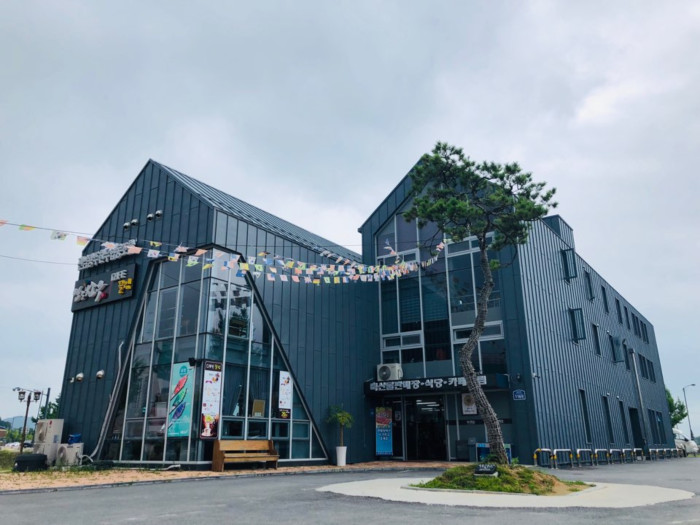
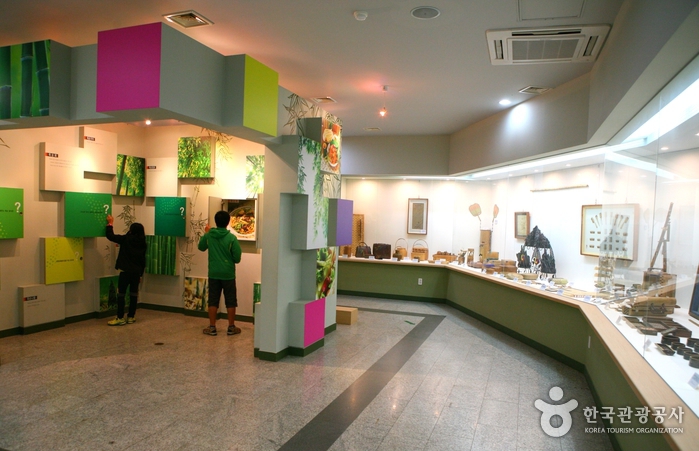
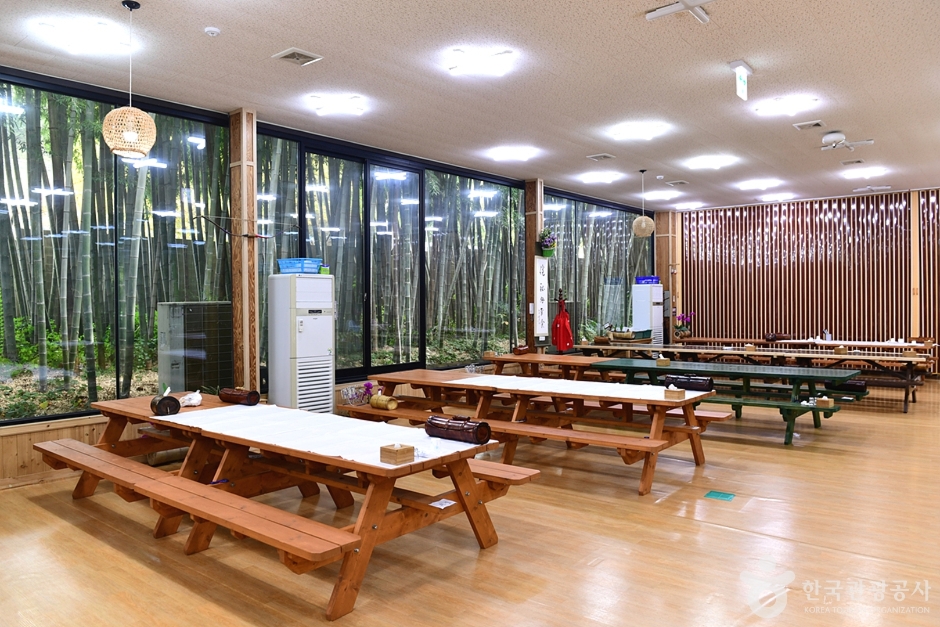
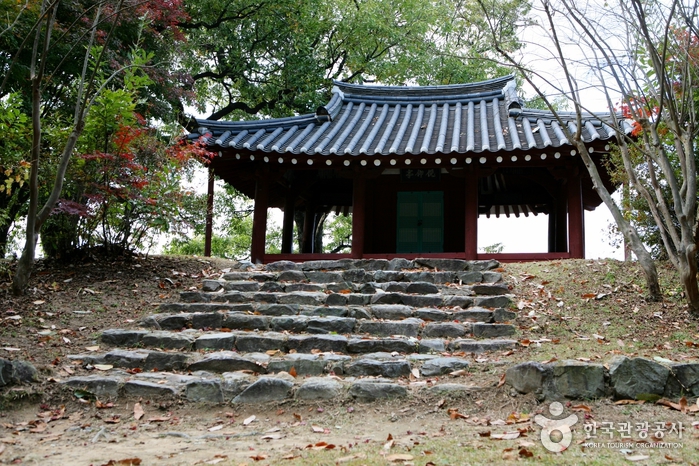

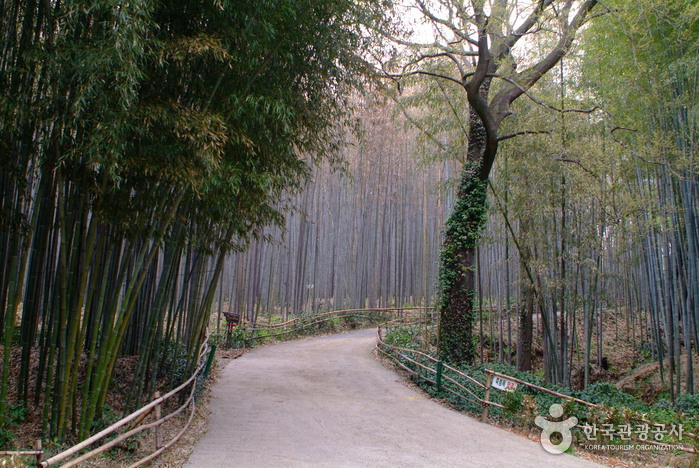
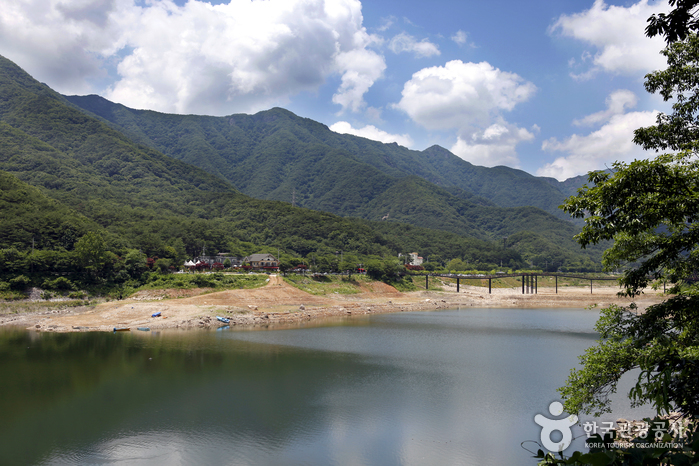
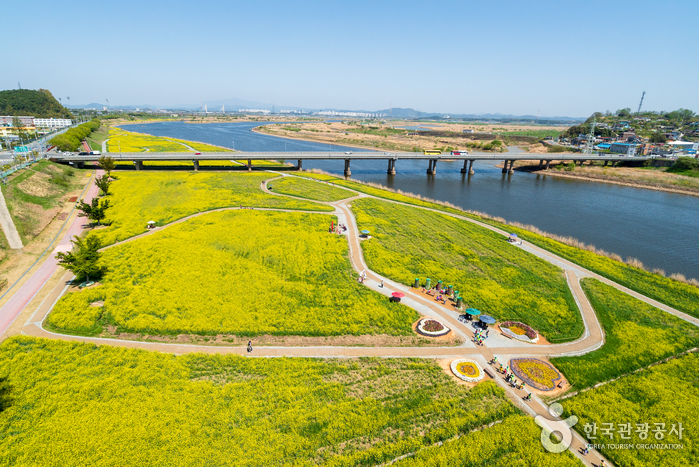
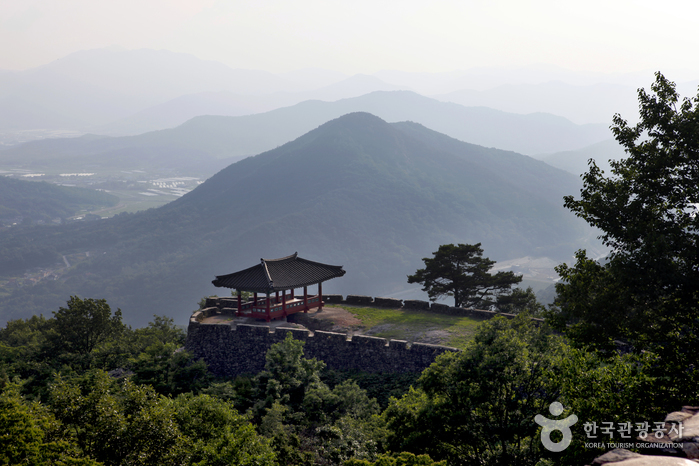
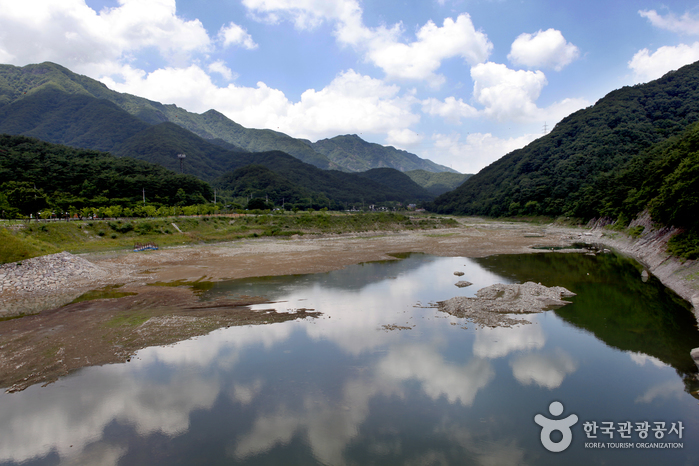
 English
English
 한국어
한국어 日本語
日本語 中文(简体)
中文(简体) Deutsch
Deutsch Français
Français Español
Español Русский
Русский